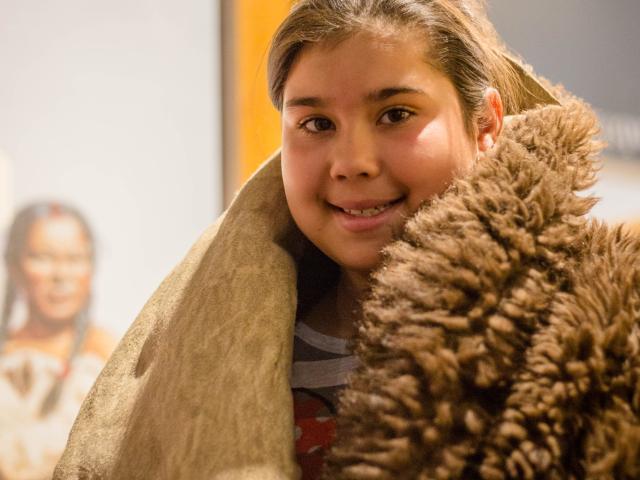Lewis and Clark Interpretive Center
The Lewis & Clark Interpretive Center stands at the crossroads of culture and commerce on the Northern Plains. When Lewis & Clark arrived at the Mandan and Hidatsa villages in 1804, they simply became the most famous of many people who visited in search of knowledge and trade. Today's visitors will experience engaging exhibits, hundreds of period artifacts, world-class art collections and friendly interpreters who tell the story of the Lewis and Clark Expedition like never before.
The Lewis & Clark Interpretive Center highlights some of the area's most famous of countless travelers and residents over hundreds of years along this special stretch of the Missouri River. Each gallery tells the story of a different one of these groups. View the more than 100 items from the John Fisher Collection that represent items Lewis and Clark used on the expedition, including one of only six working air rifles in the world. Discover North Dakota agricultural practices beginning with indigenous farming to the Homestead Act, focusing on Oscar H. Will's seed preservation efforts and catalogues. A rotating selection of Karl Bodmer's aquatints are on exhibit, documenting the travels of Prince Maximilian from 1832-1834. Two galleries feature rotating art and history exhibits, with a special emphasis on the cultural and artistic heritage of the northern Plains, including the works of George Catlin and Michael Haynes.
All Features
-
Accessibility
- Accessible Entrance,
- Passenger Drop-off/Pick-up,
- Paved,
- Wheelchair-accessible,
- Wheelchair-accessible Parking,
- Wheelchair-accessible Restrooms
-
Activities
- Guides Available,
- Self-guided Tours
-
Availability
- Open Year 'Round
-
Facility Amenities
- Restrooms
-
General Information
- Family-Friendly
-
Group & Meeting Information
- Advance Reservations Required for Groups,
- Number of Rooms: 1,
- Total Capacity of Meeting Space: 180
-
Parking
- Parking Lot







